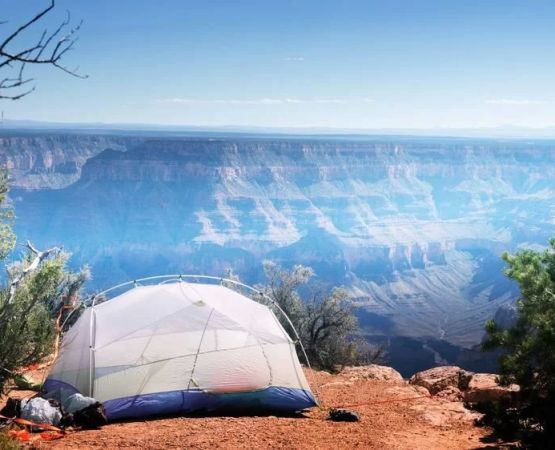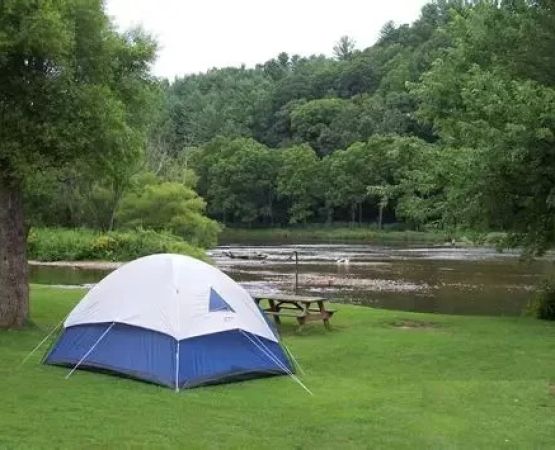How to Prevent Accidents When Using Camping Stoves
As a frequent camper, I've come to love the simplicity and practicality of camping stoves. They're an essential part of my outdoor cooking setup, especially when camping in remote areas. However, with their convenience comes a certain level of responsibility. While camping stoves are incredibly useful, they can also pose risks if not used properly. Through my personal experiences and learning from others, I’ve gathered a collection of safety tips to help ensure a safe and enjoyable camping trip when using a stove. In this article, I’ll share these tips that I've picked up over the years, so you can avoid accidents and stay safe while cooking outdoors.
1. Choose the Right Stove for Your Needs
The first step in ensuring safety with camping stoves is selecting the right one for your trip. Not all stoves are created equal, and different models have varying levels of safety features. I've learned from experience that selecting a stove suited for your specific needs is key. For example, if you’re camping in a group, you’ll want a stove with a larger cooking surface. On the other hand, if you’re a solo traveler, a smaller, more portable stove may be ideal.
1.1 Consider Stove Type
There are several types of camping stoves to choose from: propane, butane, white gas, and wood-burning. Each type has its own advantages and safety concerns. Propane and butane stoves are common and easy to use, but they require careful handling of gas canisters. White gas stoves are efficient but can be trickier to handle. I recommend thoroughly reading the instructions that come with your stove, as well as familiarizing yourself with the specific fuel requirements and usage precautions.
1.2 Check for Safety Features
When choosing a stove, I always check for built-in safety features like automatic shut-off valves, flame control, and wind protection. These features can help prevent accidents such as gas leaks, fires, or burns. If you're using a stove with a fuel canister, ensure the canister is compatible with the stove to avoid leaks or explosions.
2. Set Up Your Stove in a Safe Location
One of the most critical safety tips when using a camping stove is ensuring that it's set up on a stable, flat surface. I've learned the hard way that setting up a stove on an uneven or unstable surface can cause spills or even worse, tip the stove over entirely. Always look for a flat, non-flammable surface away from tents, trees, and dry grass to prevent fire hazards.
2.1 Keep Away from Flammable Materials
When setting up my stove, I always make sure it's a safe distance from anything that can catch fire, such as dry leaves, tents, or even clothing. It’s best to create a small, cleared area around the stove to minimize risks. If you’re camping in a windy area, use a windscreen to shield the stove from gusts of wind that could cause flames to spread.
2.2 Check for Leaks Before Igniting
Before lighting my stove, I always double-check for leaks. I gently twist the canister into place and inspect the connections to ensure a tight seal. If there’s any hissing sound or smell of gas, I immediately turn the stove off and check for leaks. I also use a soapy water solution to check for leaks in the fuel line, which is a simple and effective way to identify potential hazards before they become a problem.
3. Practice Proper Handling of Fuel Canisters
Handling fuel canisters properly is one of the most important aspects of safe stove use. I’ve found that improperly storing or handling fuel canisters can lead to dangerous situations. Always store your canisters in a cool, dry place, and avoid placing them in direct sunlight or near heat sources. I also make it a habit to only use canisters that are designed for the specific stove I’m using.
3.1 Avoid Overheating the Canister
One thing I’ve learned is that overheating a fuel canister can cause it to rupture or explode. I always make sure that the canister is not exposed to direct flame or extreme heat. Additionally, I avoid placing the stove or canister too close to a fire, as this can cause the gas inside the canister to expand rapidly and create a dangerous situation.
3.2 Dispose of Canisters Properly
Once I’ve finished using my stove, I make sure to properly dispose of empty fuel canisters. I always check with the campsite or local regulations to see if there’s a designated area for disposing of them. Never dispose of a canister in a campfire or throw it away carelessly, as it could still contain flammable gas and pose a serious risk.
4. Keep a Fire Extinguisher or Water Nearby
No matter how careful I am, accidents can happen. That’s why I always keep a fire extinguisher or a container of water close by when I’m using a stove. This is especially important when cooking in a remote area with dry, grassy surroundings. A fire extinguisher is the most reliable tool for putting out a stove-related fire, but if I don’t have one, I make sure to have plenty of water on hand to quickly douse any flames.
4.1 Learn How to Use a Fire Extinguisher
I highly recommend familiarizing yourself with how to use a fire extinguisher before heading out on your trip. I’ve taken the time to read the instructions and practice using one, as this could make all the difference in an emergency. A quick response is crucial in preventing small fires from turning into larger, uncontrollable ones.
4.2 Never Leave the Stove Unattended
While cooking, I always stay nearby and monitor the stove. It’s easy to become distracted or step away, but leaving a lit stove unattended is a recipe for disaster. Whether I’m boiling water or cooking a meal, I make sure I’m always paying attention to what’s going on. This has saved me from several potential accidents in the past.
5. Properly Extinguish the Stove After Use
Once I’m done cooking, I take the time to properly extinguish the stove. I always make sure the flame is fully out and allow the stove to cool down before packing it away. If you’re using a liquid fuel stove, always turn off the fuel valve completely to prevent any residual fuel from igniting when the stove is stored away.
5.1 Let the Stove Cool Before Storing
One thing I learned the hard way is that storing a hot stove can be dangerous. After use, I let the stove cool completely before packing it away in my gear. This prevents any chance of accidental burns or damaging other equipment with residual heat.






